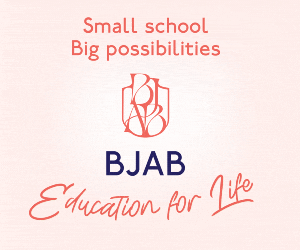Projects such as this are helped by a sea change in cultural expectations in Senegal and by the government actively encouraging projects submitted by women. Bitilokho Ndiaye, the adviser on technology to the Senegalese government said: “Infrastructure-wise, there’s no obstacle in Senegal. What the obstacle is, is all of the socio-cultural stereotypes and judgments around the issue of women in technology. And we’re trying to deconstruct that stereotype.” With the government being so forward-thinking, things are looking good on the tech front in Senegal.
As is customary in these columns, I will now blather on about something and try to make it readable by humans. Stick with this one though, it’s pretty cool. Remember, oh, about a thousand years ago now, when you used to have a phone with no pretty pictures on which you’d dial *121*reload#88888# to add credit to your phone? Well, right now in 2018, this system is being given a new lease of life. For the majority of Africans, smartphones are a luxury and very basic (often bulk-produced Chinese) handsets are the norm. Of course, no real apps can be produced for such devices, as they lack the technology or even the network connectivity. Unstructured Supplementary Service Data (UUSD) works over the standard phone network, which some of you may know as GSM.
USSD used to work like this: Send a message via text, network reads the request, treats the code, sends a result to your phone. The new way is very similar, except that the network operator now funnels the request via their internet layer, allowing them to treat these codes in a secure fashion, either performing transactions on their network or a third party’s, then returning the results via the GSM network again. The huge advantage is that the number of apps is virtually limitless because they are all hosted with the phone service provider, so even the most basic of phone can use them, provided they support the GSM standard. This opens up even the most basic brick-style phone to a whole world of new possibilities.
Mlouma, for example, uses the USSD portal to put farmers and growers in touch with buyers and live market prices. Localization allows them to negotiate the best price for their crops at any given time. Eneza Education uses USSD to deliver educational content, lessons and courses to around 5 million Africans, mainly in and around Kenya and Refunite (my favourite) is a million-strong user base that uses the technology to reunite refugees with their families in conflict-torn countries. Surprisingly, this has only really come about in the past couple of years, since a few enlightened individuals started to re-purpose the older technology. It seems it has a bright future.
Finally, a useful app with a silly name – iCow. Yes, it’s about cows. Cattle prices and milk prices are one thing but iCow is an app that registers the beasts, then sends the farmer details of best feeding times, milking schedules and immunization dates via SMS, meaning the farmer can maximize the potential of their herd and potentially spend less on production. This sort of application is literally changing the way agriculture works in Africa.
Photos
iCow
SIGESTE
REFUNITE






